Many patients have come across such a diagnostic method as an electroencephalogram of the brain. The definition and essence of this type of research is extremely important for effective treatment and accurate determination of the patient's condition. Therefore, it makes sense to consider the EEG in more detail.
What is an electroencephalogram of the brain
This terminology is used to describe one of the methods for diagnosing the state of the brain, which is based on the process of recording its electrical activity.
Focusing on what the electroencephalogram of the brain shows, doctors can identify various pathologies in the vessels, the development of inflammatory diseases, as well as signs of a tumor and epilepsy. It is worth noting the important fact that it is the EEG that is the only method of outpatient research, with the help of which it becomes possible to diagnose a person in an unconscious state. Moreover, this technique does not pose a danger to patients of any age category, including children.
Using what the electroencephalography of the brain shows, doctors can record the effect of various drugs on patients, assess the dynamics of the course of the disease, and also make adjustments to the methods of therapy. Continuing to consider the features of the EEG, it should be noted that this type of study is used to track all changes in the brain - from reversible to structural. This is one of the main differences between this technique and other methods of examining a patient.
What does an EEG look like?
As for the visual component, the electroencephalogram has the form of a simple curve, which is formed in the process of registering fluctuations in the electrical activity of the brain. It is this curve that allows the doctor to get a clear picture of how brain activity manifests itself. A special card is used to determine the nature of a particular disease and its degree.
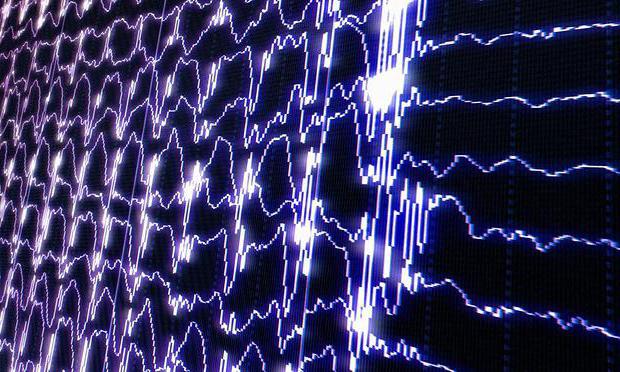
What the brain electroencephalogram shows is extremely important information in evaluating and influencing CNS related problems. We are talking about the property of the rhythm, with the help of which it becomes possible to accurately display the activity of all structures located in the brain. Another indicator recorded using the EEG is the features of the use of the brain's own reserves.
EEG indications
It is important not only to know the essence of the definition of “electroencephalogram of the brain”, what this study shows and what characteristics it has, but also to understand for whom this type of diagnosis is relevant.
Initially, it is necessary to clarify the fact that no one will do it without sending an EEG. And although this procedure is not capable of causing harm to patients in any condition, physicians, before using this diagnostic resource, collect a picture of the disease of a particular person. And only if the classical methods do not allow to accurately determine the essence of the disease, an EEG is prescribed.

In this case, there are situations in which an electroencephalogram is performed in a mandatory case:
If there is a suspicion of a tumor;
When the patient is not able to objectively evaluate his own feelings or is too young for this (children);
If the patient had a sleep disorder for a long time or suffered from insomnia;
In case of psychopathy, nervous breakdowns and psychoses;
If a brain lesion was recorded, which developed from a nosological form;
When the patient has vascular disease;
The development of necrosis during surgery;
If the patient is in a serious condition resulting from poisoning or injury;
With the patient.
With such difficulties, the electroencephalogram of the brain is extremely important, which shows the relevance of this technique in working with patients of various groups.
Study preparation
There are a few simple rules that must be followed before it is carried out. What this study shows largely depends not only on the condition of the patient, but also on other factors. So for a more accurate diagnosis, you need to stop using anticonvulsants a few days before the procedure.

Before the examination, it is important to wash your hair. In this case, you can not use mousses, creams, styling varnishes, foams and gels. It is also worth paying attention to the hairstyle: if you have dreadlocks or braids, you need to undo them, after which you will have to remove all metal elements (piercing, jewelry).
At the same time, it is important to know that this diagnostic procedure is irrelevant for those patients who, at the time of the study, have viral or colds.
Carrying out algorithm
Understanding what the electroencephalogram of the brain shows, it makes sense to pay attention to the procedure itself.
Brain research begins with such an EEG procedure, which is commonly called routine. At this stage, the analysis of the brain takes place. For 10-15 minutes, with the help of graphic recording, the biological potentials of the brain are recorded and standard functional tests are performed.
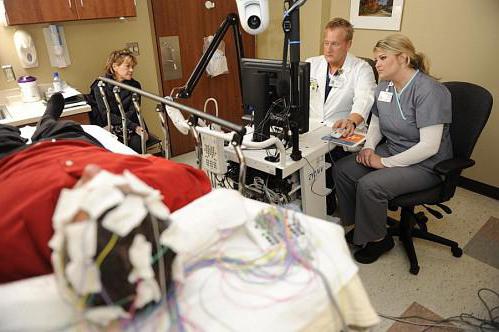
In the event that the use of a routine EEG did not give the desired results, doctors may prescribe an electroencephalogram with This is the following procedure: the patient is woken up a few hours earlier than usual or deprived of sleep for the whole night, after which they begin to study the electronic impulses of the brain.
Within the framework of the topic “EEG of the brain - price, preparation and description”, it is worth noting that in case of suspected paroxysm, a long procedure can be prescribed, during which sleep is recorded. This approach makes it possible to obtain more accurate data.
If we talk about the most complete EEG, then this is a study that is carried out during sleep, before it and immediately after waking up. During these periods, the diagnosis of the state of the brain is much easier. As for the cost of the procedure, it may vary depending on the type of medical institution, as well as the region. But on average, the price of an EEG ranges from 1,500 to 2,000 rubles.
Features of the procedure
There are a number of nuances that may seem unusual to those who have never attended an EEG. An electroencephalogram of the brain is carried out using a specific device that looks like a cap, which is put on the patient's head. This device is necessary for high-quality installation of electrodes. The number of the latter directly depends on the fact how old the patient is. For example, if a child's brain activity is being studied, then 12 electrodes are used. In the case of adults who are already of age, this number increases to 21.
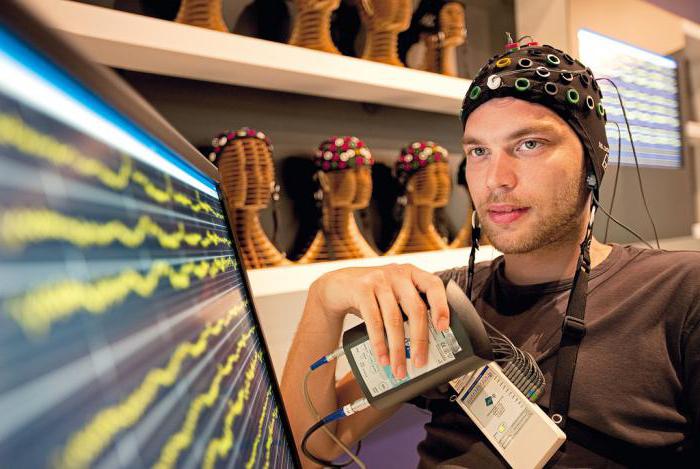
The process does not end there: the electrodes are filled with a substance that allows the rapid transmission of electrical impulses. Further, the device, fixed on the patient's head, is connected by means of wiring to an electroencephalograph, which initially amplifies the received signal, and then transfers it to a computer for further processing.
Already in the computer, the signal acquires a wave-like form, allowing doctors to assess the state of the brain in general and the activity of cells in particular.
The need to use the EEG
It is difficult to overestimate the relevance of what the electroencephalogram of the brain shows. This information makes it possible to identify rather complex diseases and abnormalities that may not have visible symptoms. At the same time, it should be noted that at the moment more modern diagnostic methods are available to patients. We are talking about magnetic resonance imaging and computed tomography.
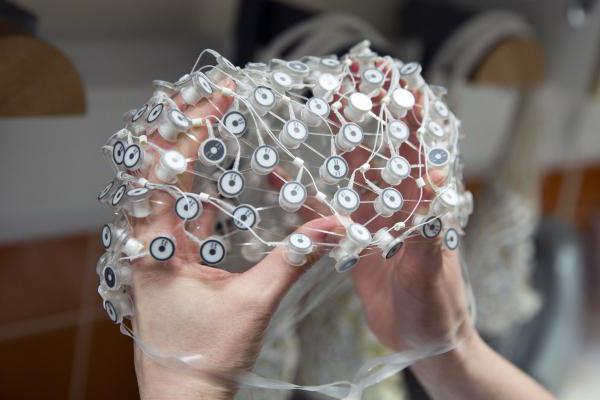
Nevertheless, EEG is still actively used in Russian clinics, allowing doctors to make fairly accurate diagnoses. The use of this technique is especially important when working with patients suffering from epilepsy. This is explained by the fact that the EEG makes it possible to record important details and features of the patient's condition at any time.
Sleep monitoring
This procedure, during which the EEG is used, is of great importance in the diagnosis of diseases, as well as in assessing the process of their course. As mentioned above, an electroencephalogram can be performed at different times, and the sleep period is the most optimal.
Leading epileptologists confirm that this particular type of EEG allows more accurate diagnoses, as well as better correction and control of epilepsy therapy. Quite often, those disorders of mental development in children that are not recorded during routine examination are detected during EEG sleep monitoring of the brain, which shows a higher efficiency of this approach to diagnosis.
How to prepare your baby for sleep monitoring
In order for the diagnostic procedure to be extremely effective, you need to wake up the child 2 hours earlier than his usual awakening. After that, during the day you need to make sure that the baby does not fall asleep. To do this, you will have to spend time with him quite actively.

Preparation for the examination can begin after 18-00. Its essence boils down to limiting the consumption of sweets and liquids, as well as salty and spicy foods. At the same time, any factors that can lead to overexcitation of the child should be avoided.
EEG of the brain in children, how it goes and why
For the most accurate diagnosis of the child's condition, the sleep monitoring technique described above is used. At the same time, there are a number of indications for carrying out this diagnostic procedure in the case of children:
When there is suspicion of ischemic damage to the central nervous system;
To assess the severity of the disease;
With epileptic seizures and pseudo-attacks;
To assess the correct development and formation of bioelectrical activity in children at the earliest stage of their life (infants);
In the case when there is a need to predict the development of brain damage and assess its dynamics.
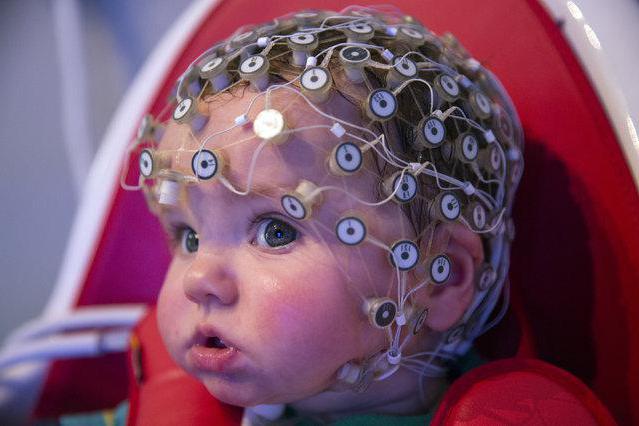
The very same procedure is carried out in the period from 8 to 9 pm at home. This allows you to record the activity of the child's brain before bedtime and after falling asleep. Otherwise, the algorithm of actions is the same as when working with adults.
It should be noted that even for infants, such a research method as the EEG of the brain is absolutely safe. There will always be important diagnostics, regardless of the method, but this type of assessment of the state of the brain will remain one of the most relevant for a long time to come.
Conclusion
The conclusion regarding the use of EEG is obvious - this technique is necessary for the efficient operation of clinics and accurate diagnosis of patients of various groups. At the same time, this procedure remains one of the most accessible.

